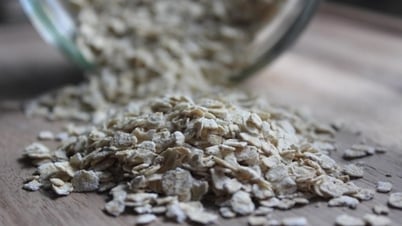
Female sex hormones estrogen and progesterone can help relieve pain - Photo: FREEPIK
The new study, conducted in mice, found that the two hormones work together to direct immune cells located near the spinal cord. These cells then produce their own “painkillers”—a type of opioid called enkephalin. This phenomenon only occurs in female mice.
In the absence of injury, both male and female mice produced baseline levels of enkephalins thanks to these special immune cells, according to lead author Elora Midavaine, a postdoctoral fellow at the University of California, San Francisco (UCSF).
In this way, the immune cells interrupt the pain signals emitted by nerve cells in the spinal cord. This essentially prevents those signals from reaching the brain.
In the long term, the research helps shed light on gender differences in how people perceive pain, as well as how pain perception changes during pregnancy and menopause — periods when estrogen and progesterone levels in the body fluctuate dramatically.
Many previous studies have shown that there are differences between men and women in the way they experience pain. In general, women show a higher sensitivity to pain than men. They feel pain more intensely when their pain receptors are activated. Studies have also shown that women have a lower pain threshold.
Studies from other labs have suggested that T cells play a role in pain perception in female mice, while pain sensation in male mice depends on a different type of cell.
The study raises questions about what happens during menopause - when the body stops producing female sex hormones.
In the context of pain research, there are clear sex differences in the prevalence of pain disorders, the effectiveness of pain medications, and how pain is processed at the cellular level, Midavaine notes.
Source: https://tuoitre.vn/estrogen-thuc-day-co-the-san-sinh-opioid-giam-dau-sau-chan-thuong-20250519000437234.htm



![[Photo] Welcoming ceremony for Hungarian President Sulyok Tamas and his wife on an official visit to Vietnam](https://vphoto.vietnam.vn/thumb/1200x675/vietnam/resource/IMAGE/2025/5/28/7956bacf4a3e4bde8326cb8f72a3b26c)
![[Photo] President Luong Cuong holds talks with Hungarian President Sulyok Tamás](https://vphoto.vietnam.vn/thumb/1200x675/vietnam/resource/IMAGE/2025/5/28/0f603676be6444aa9f52d4bd32582b4d)
![[Photo] Hungarian President begins official visit to Vietnam](https://vphoto.vietnam.vn/thumb/1200x675/vietnam/resource/IMAGE/2025/5/27/ab75a654c6934572a4f1a566ac63ce82)

![[Photo] Hungarian President and his wife take a walk and enjoy the view of Hoan Kiem Lake](https://vphoto.vietnam.vn/thumb/1200x675/vietnam/resource/IMAGE/2025/5/28/b9c83fbe6d5849a4805f986af8d33f39)




![[Video] Cancer Screening: Are Tests Really Necessary?](https://vphoto.vietnam.vn/thumb/402x226/vietnam/resource/IMAGE/2025/5/28/2855b2287bab4ee3b9668099e4723265)








































![[Case Study] VIMC – 30-year journey of overcoming waves and reaching far](https://vphoto.vietnam.vn/thumb/402x226/vietnam/resource/IMAGE/2025/5/28/ac45a93a62884eec85471e6c89ef521a)









































Comment (0)